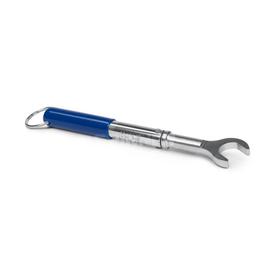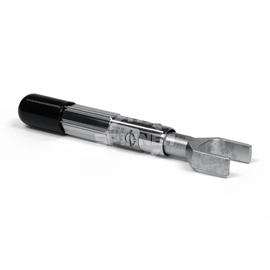Torque Wrenches for optimal stability and RF connectivity
SPINNER’s torque wrenches guarantee optimal mechanical stability for your RF Connector while ensuring outstanding RF performance.
While assembling a connector to a cable , the back nut has to be tightened to the connector body. The best possible result can be achieved by using a torque wrench. For precise measurement results, the connectors must be coupled according to specific standards.
IEC has specified the coupling torque for connectors used in mobile communication networks. SPINNER offers a selection of torque wrenches to support the installation of these connector systems. Furthermore, the use of torque wrenches can prevent overstraining of connectors and ensure maximum product life time at the best possible performance.
A torque wrench is a tool used to precisely control the torque applied to a bolt or nut. There are different types of torque wrenches, including "click-type" and "break-over" torque wrenches. Here are the main differences between these two types:
Click-Type Torque Wrench
A click-type torque wrench has a mechanism that produces a noticeable "click" sound and a slight release in the handle when the preset torque is reached. This sound and release signal to the user that the desired torque has been achieved. The mechanism often involves a spring-loaded ratchet that snaps over a point to produce the click.
Click-type torque wrenches are typically very accurate and allow precise control of the torque.They need regular calibration to maintain their accuracy.
Due to their precise control and clear feedback, they are commonly used in the RF industry and other fields where precise tightening of fasteners is important.
Break-Over Torque Wrench (also break-away or roll-over)
A break-over torque wrench operates with a hinge mechanism. When the preset torque is reached, the wrench collapsed at the joint, indicating to the user to stop turning.This collapsing action is often less audible than the click of a ratchet-type wrench but is still noticeable.
Break-over torque wrenches are also very accurate, but the feedback can be subtler than with click-type wrenches. They provide a reliable method of torque control and also require regular calibration.
These wrenches are used in various industries, including radio frequency, especially where a less dramatic feedback is preferred, or employees in the laboratory should not be acoustically disturbed by others using a click torque wrench.
Summary of Differences:
- Feedback: Click-type torque wrenches provide audible and tactile feedback (“click”), while break-over torque wrenches indicate the torque is reached through a noticeable folding or collapsing in the middle part of the hand grip.
- Mechanism: Click-type wrenches use a spring-loaded ratchet mechanism, while break-over wrenches use a hinge mechanism.
- Usage: Both types are used in similar fields; the choice often depends on user preference for the type of feedback.
Both types of torque wrenches are valuable tools, and the choice between them can be based on the specific application and the user’s preference for feedback type.
The use of SPINNER torque wrenches helps you to reduce installation costs significantly and to maintain constant installation quality at the same time.
If you can’t find a torque wrench according to your specifications online, please contact our sales team with the specification needed per email or select one of the displayed products for a Quote Request and add your special requirements in the comment field of the form before submitting.
SPINNER applies extremely high standards with regard to quality, engineering, materials, and manufacturing. This enables us to offer tools with the best possible performance while ensuring optimized installation and failure-free operation, under even the harshest conditions.


